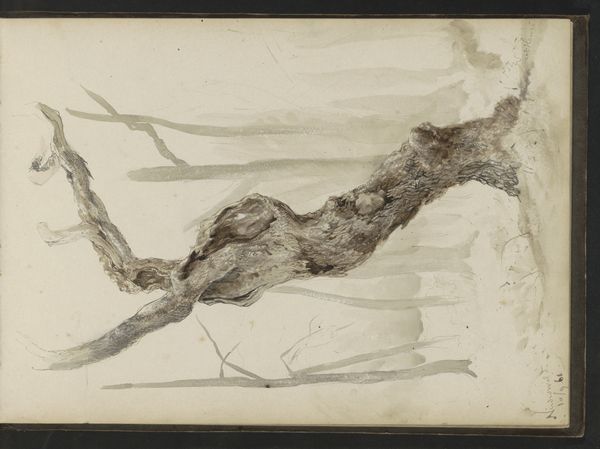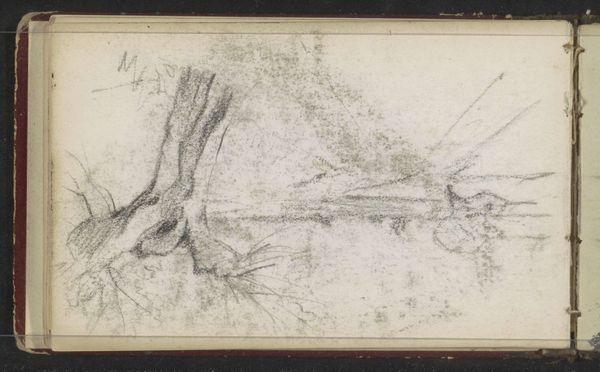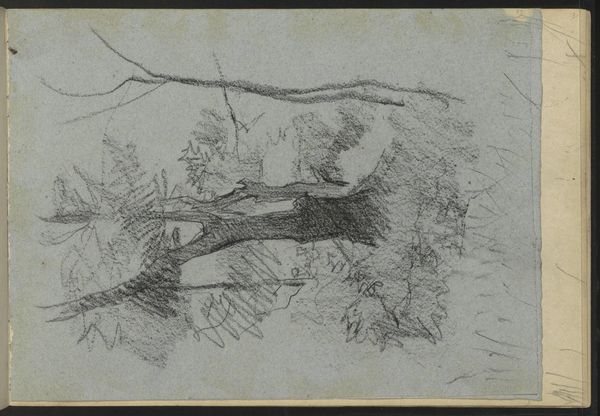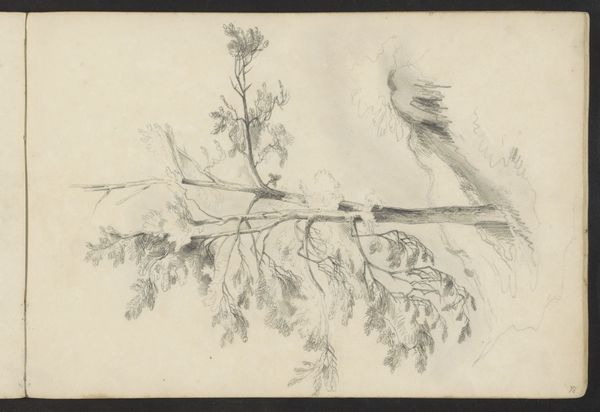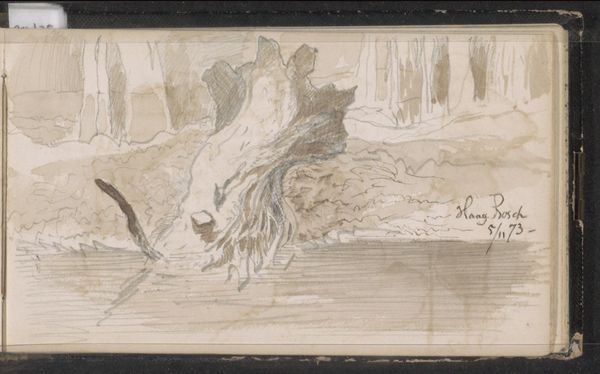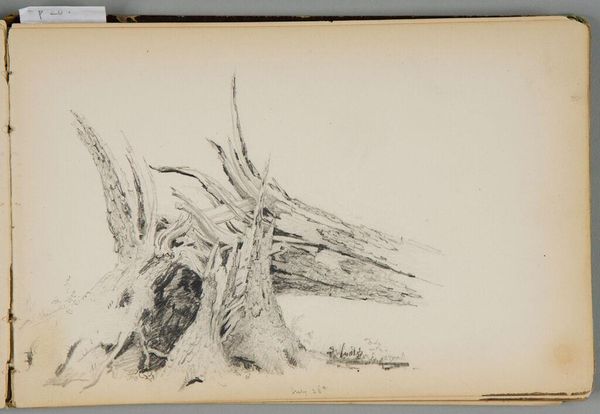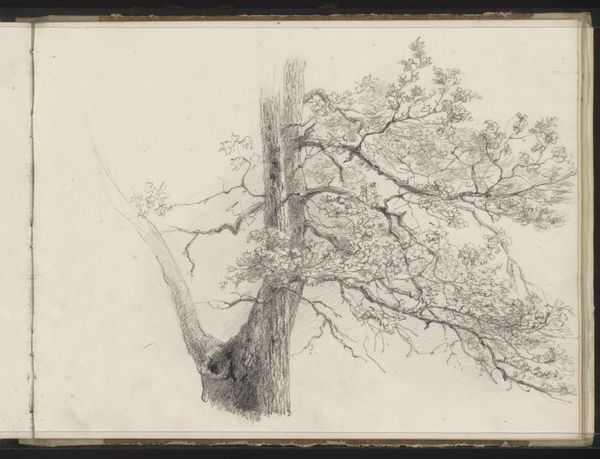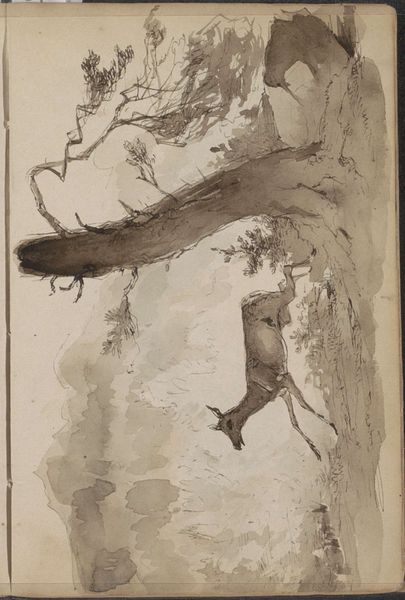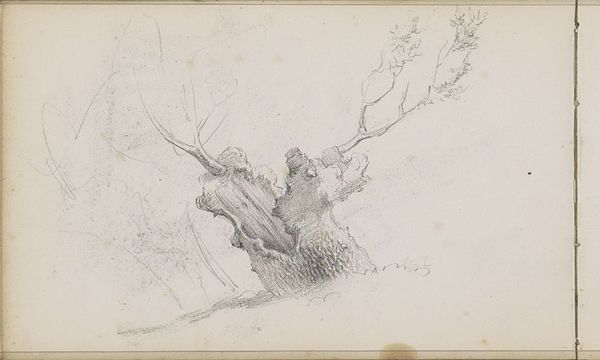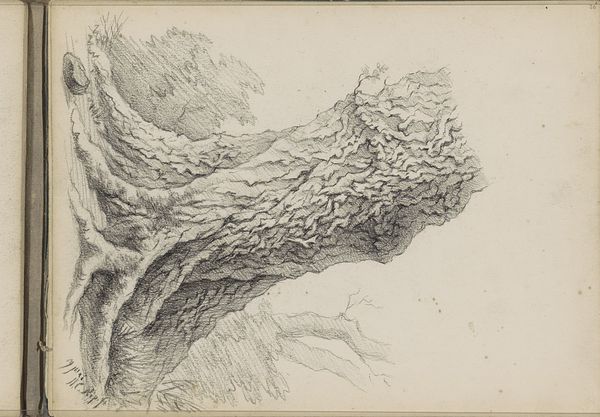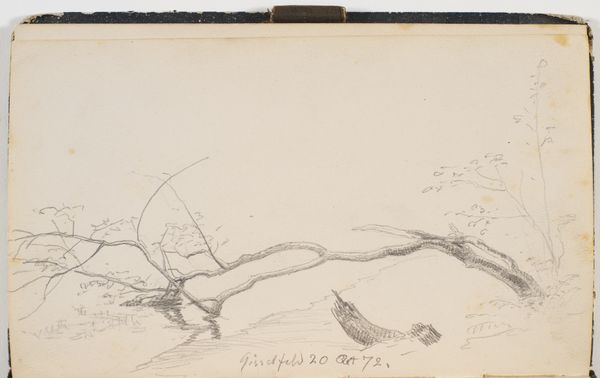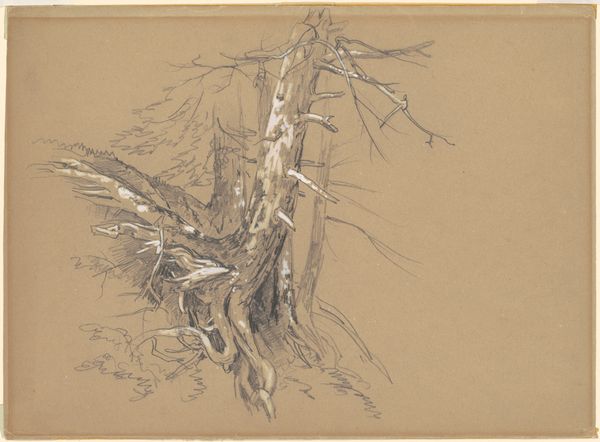
drawing, paper, ink, pencil
#
drawing
#
pencil sketch
#
landscape
#
paper
#
form
#
ink
#
pen-ink sketch
#
pencil
#
line
#
watercolour illustration
#
watercolor
#
realism
Copyright: Rijks Museum: Open Domain
Curator: Ah, this gives me a peculiar feeling, a sort of wistful calm. It reminds me of childhood days spent wandering through sleepy forests. Editor: Indeed. We are looking at "Eikenboom in Niederwald," a work made between 1861 and 1869 by Johannes Tavenraat. It resides here at the Rijksmuseum. It's a beautiful example of Tavenraat's skill with pencil and ink on paper. Curator: Pencil and ink, you say? There's a deceptive lightness to it, almost airy. You’d think it’s just a fleeting watercolor, but then you see the confident lines defining that formidable branch. It has this weight, yet the overall feel is of something transient, like a half-remembered dream. Editor: The realism, or rather Tavenraat's version of realism, situates the image firmly within a broader tradition. It speaks to how the artist engaged with prevalent Romantic ideas concerning nature, a sentiment which was embraced by emerging bourgeois audiences that frequently visited museums at the time. It offers a seemingly unedited experience with the sublime in a way accessible and visually comforting to them. Curator: Sublime is an excellent word for it. There’s a stark, almost skeletal beauty in the bare branches against that soft background. Like looking at the very bones of the landscape. It reminds me that even in the starkest image there can be profound beauty and that’s something worthwhile remembering in a chaotic world, don't you think? Editor: Absolutely. This piece serves as a visual artifact that underscores a very particular interaction between emerging middle-class cultural institutions and popular aesthetics. These evolving dynamics significantly shaped how audiences interacted with art as an idea of what the purpose of art should be. Curator: To experience the profound. Yes, precisely. Thank you, thank you for this framework, for helping bring my hazy feelings into better focus. Editor: My pleasure, and thank you for bringing it back to the bones of beauty—of all things, that may be what art is always about.
Comments
No comments
Be the first to comment and join the conversation on the ultimate creative platform.
